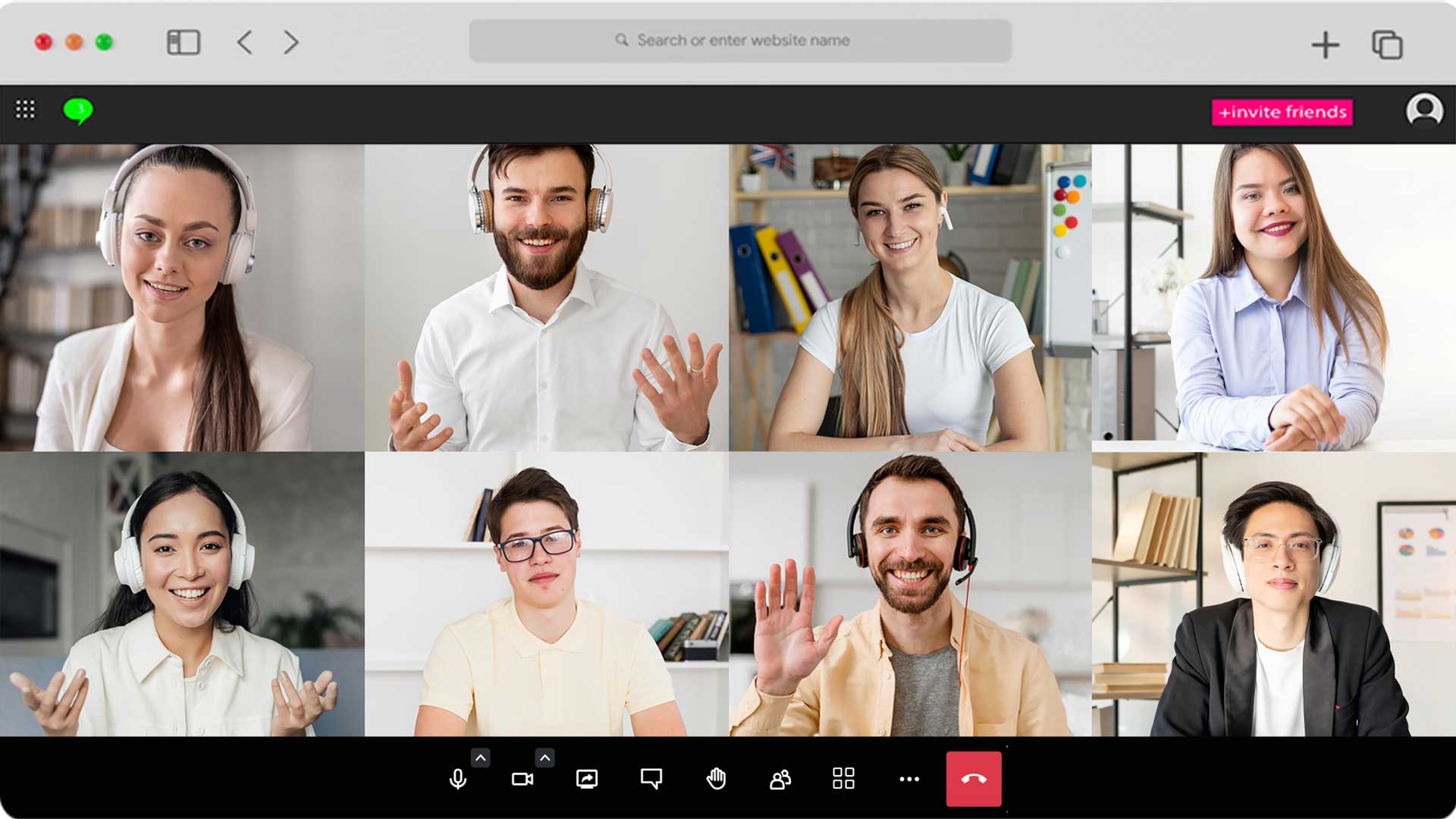The COVID-19 pandemic has ushered in a new era of digital workspaces, making virtual meetings an indispensable part of modern work culture. The statistics paint an undeniable picture: the average number of meetings per person jumped by 12.9% in the past year, with a 13.5% increase in attendees per meeting.
Despite the broad acceptance of this new normal, virtual meetings are not without their challenges. From technical difficulties to over communication and meeting overkill, the shift to virtual spaces has opened up a fresh set of complications. This blog will delve into the intricacies of virtual meetings, exploring how to conduct a successful session, avoid common mistakes, and foster an engaging environment.
Understanding Virtual Meetings
In essence, a virtual meeting is an online interaction that allows people across the globe to collaborate via video conferencing platforms, chat applications, and other digital tools. They serve as time-efficient alternatives to traditional, in-person meetings, eliminating the need for dressing up or commuting.
Initially, virtual meetings were ad hoc and unstructured, but the pandemic-triggered transformation has forced organizations to rethink this approach. Today, they are the most sophisticated form of business communication, warranting careful planning and strategic execution.
Steps to a Successful Virtual Meeting
Selecting the Ideal Virtual Meeting Tools
Picking the right set of virtual meeting tools is pivotal to the success of the session. Consider the number of participants, the features you’ll need (like session recording, breakout rooms, live chat, screen sharing, whiteboards, and gamification), and the level of collaboration required. A meeting of only a few people might be best served by a simpler platform, while a larger, more interactive meeting might benefit from a robust, feature-rich platform like Google Workspace.
The Power of a Well-Planned Agenda
An unplanned meeting can quickly become a chaotic, unproductive time sink. A carefully designed agenda, on the other hand, gives structure to the meeting, ensuring it serves its intended purpose. Define the goals, objectives, structure, participants, and the allotted time for each topic. And don’t forget to factor in breaks, Q&As, networking sessions, and time zone considerations.
Setting Meeting Etiquette Standards
In a virtual setting, maintaining professionalism and productivity can be challenging. This is where meeting etiquette comes in. Ask participants to log in five minutes early to test their equipment, mute their microphones when not speaking, announce their names before speaking, and read the meeting agenda thoroughly beforehand. Sending out the meeting agenda along with software apps, tools, and instructions for installation and troubleshooting can further enhance the meeting experience.
Conducting the Meeting
Once the preparations are complete, it’s time to conduct the meeting. Begin with introductions or an icebreaker, ensure everyone gets a chance to speak, stick to the agenda, dedicate time for Q&A, and, depending on the context, set aside time for a networking session.
The Importance of Post-Meeting Follow-ups
After the meeting, summarize the key points, action items, and next steps. Send out meeting minutes and, if necessary, schedule follow-up meetings. Collect feedback to understand the effectiveness of the meeting and identify areas for improvement.
Avoiding Common Virtual Meeting Pitfalls
Addressing ‘Zoom Fatigue‘
The sheer volume of virtual meetings can lead to “Zoom fatigue”, a phenomenon characterized by the intensity of staring at screens, the discomfort of constantly seeing oneself, the sedentary nature of the setup, and the mental taxation that comes with it. To combat this, encourage attendees to take small breaks, turn off their cameras when not speaking, and make meeting attendance voluntary when possible.
Ensuring Personalization
A surefire way to prevent virtual meetings from becoming dull is to personalize them. Make an effort to engage with attendees individually and ensure everyone gets a chance to voice their insights or opinions.
Streamlining Meeting Agendas
Poorly planned meeting agendas can derail even the most well-intentioned meeting. Avoid polarizing topics that could lead to arguments and make sure to schedule major announcements at the beginning of the meeting to prevent loss of engagement.
Engaging Participants Actively
Long stretches of passive screen time can cause participants to disengage. By assigning multiple moderators, facilitating active participation, and rotating responsibilities, you can keep your meetings lively and engaging.
Conclusion:
In a world where remote work has become the norm, mastering the art of conducting effective virtual meetings is crucial. By choosing the right tools, planning thoroughly, and avoiding common pitfalls, you can create virtual meeting spaces that are not only efficient and productive but also engaging and collaborative.
Despite the challenges, virtual meetings present an opportunity to redefine our workspaces. As we continue to adapt and grow in this digital era, our success lies in our ability to utilize these tools to their fullest potential. Now, more than ever, we have the chance to collaborate beyond boundaries, innovate across time zones, and bring the world closer – one virtual meeting at a time.


